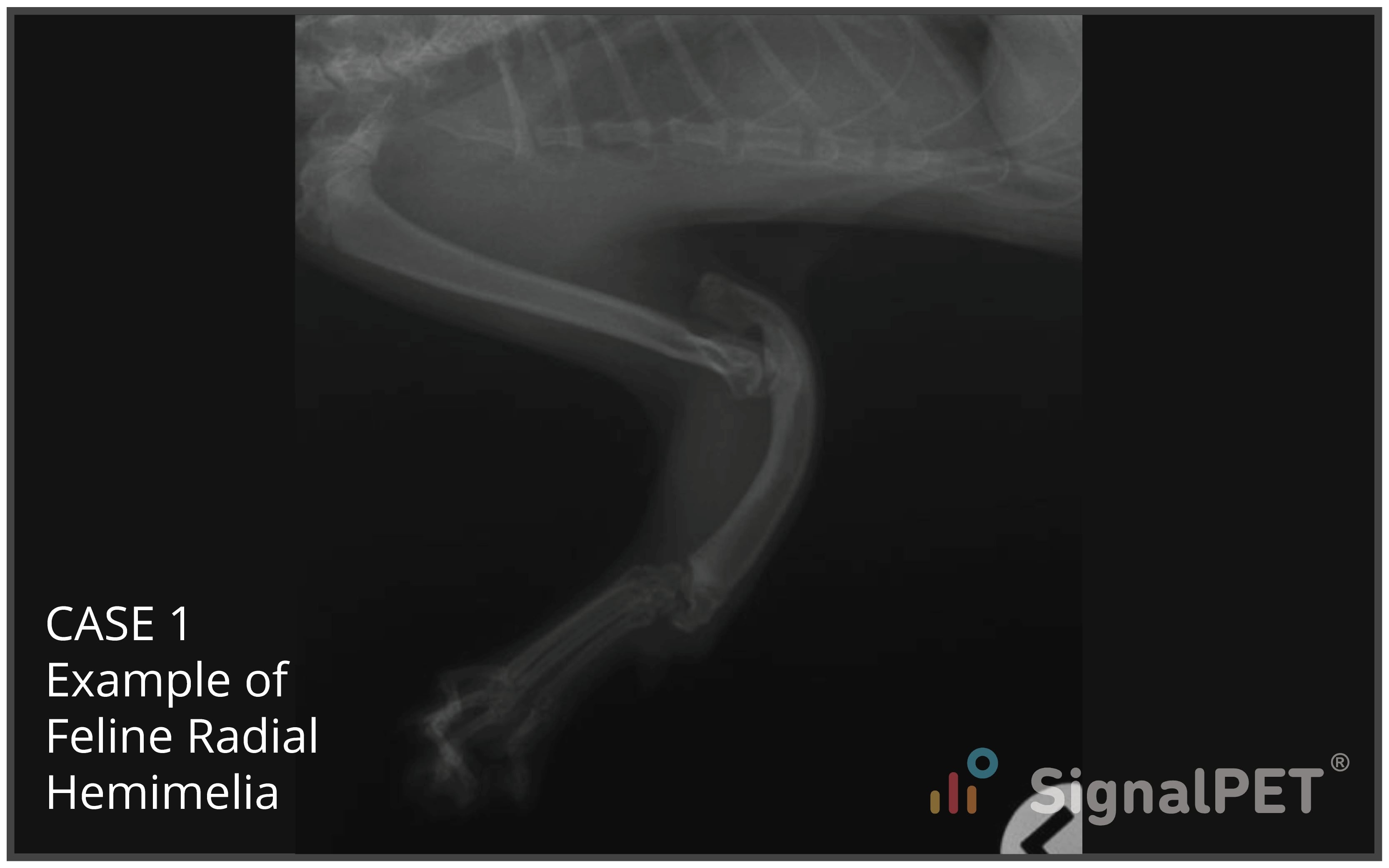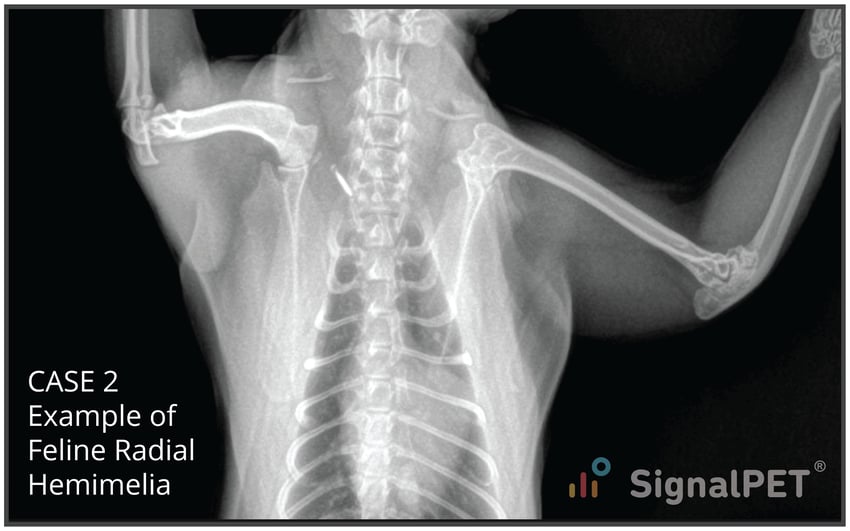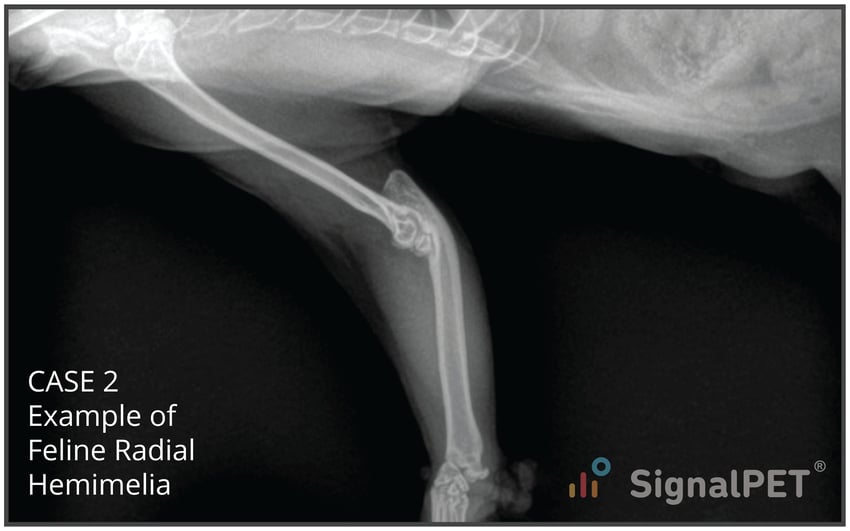Radiology Case of the Week | Feline Radial Hemimelia
Published by Chelsea Kunst, DVM, DACVR on April 08, 2020
Recently, we have seen two cases of feline radial hemimelia, in which the radius is incompletely formed or absent.
Hemimelia is a congenital disorder in which there is complete or partial absence of a bone. In the first patient, radial aplasia or agenesis would also be correct terms. Radial agenesis is the most common dysostosis in dogs and cats, and although generally reported in the literature as more commonly unilateral, most case studies report bilateral occurrence, which also coincides with my personal experience.
Case 1

Colloquial terms for these felines include ‘twisty’ or ‘kangaroo cat,’ and ‘squitten’ (as these cats tend to sit on their haunches with short forelimbs, similar to a squirrel). A singular etiology is not known, however this is likely to be in part a hereditary condition and therefore breeding is discouraged.
Case 2
 Treatment varies depending on the degree of deformity and reduction of limb function. If caught at a very young age, splints can be placed in order to reduce the deformity into a more typical anatomic position, and to prevent fracture of the ulna, flexure contracture, and muscle atrophy. Given that diagnosis typically occurs at a very young age, the splints need to be changed often as the patient grows, and continue until bone maturity. Surgical treatment is considered in more severe cases and can include ulnocarpal arthrodesis or amputation among other options.
Treatment varies depending on the degree of deformity and reduction of limb function. If caught at a very young age, splints can be placed in order to reduce the deformity into a more typical anatomic position, and to prevent fracture of the ulna, flexure contracture, and muscle atrophy. Given that diagnosis typically occurs at a very young age, the splints need to be changed often as the patient grows, and continue until bone maturity. Surgical treatment is considered in more severe cases and can include ulnocarpal arthrodesis or amputation among other options.

Most of these patients experience a good quality of life, especially if kept indoors.
References
Bezhentseva A, Singh H, Boudrieau RJ. Bilateral radial agenesis in a cat treated with bilateral ulnocarpal arthrodesis. Vet Comp Orthop Traumatol 2018: 31(05): 379-384.
Pisoni L, Cinti F, Del Magno S and Joechler M. Bilateral radial hemimelia and multiple malformations in a kitten. Journal of Feline Medicine and Surgery 2012; 14: 598-602.
